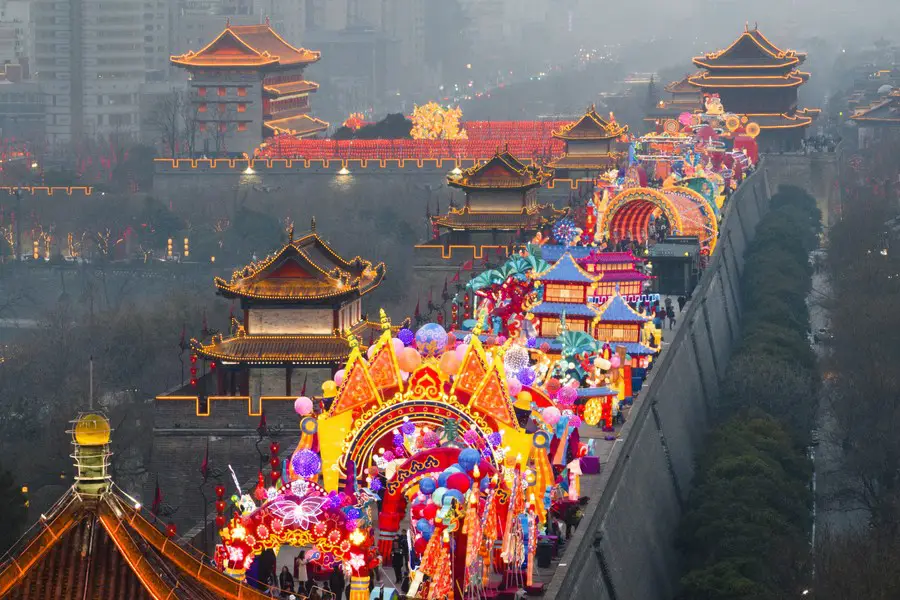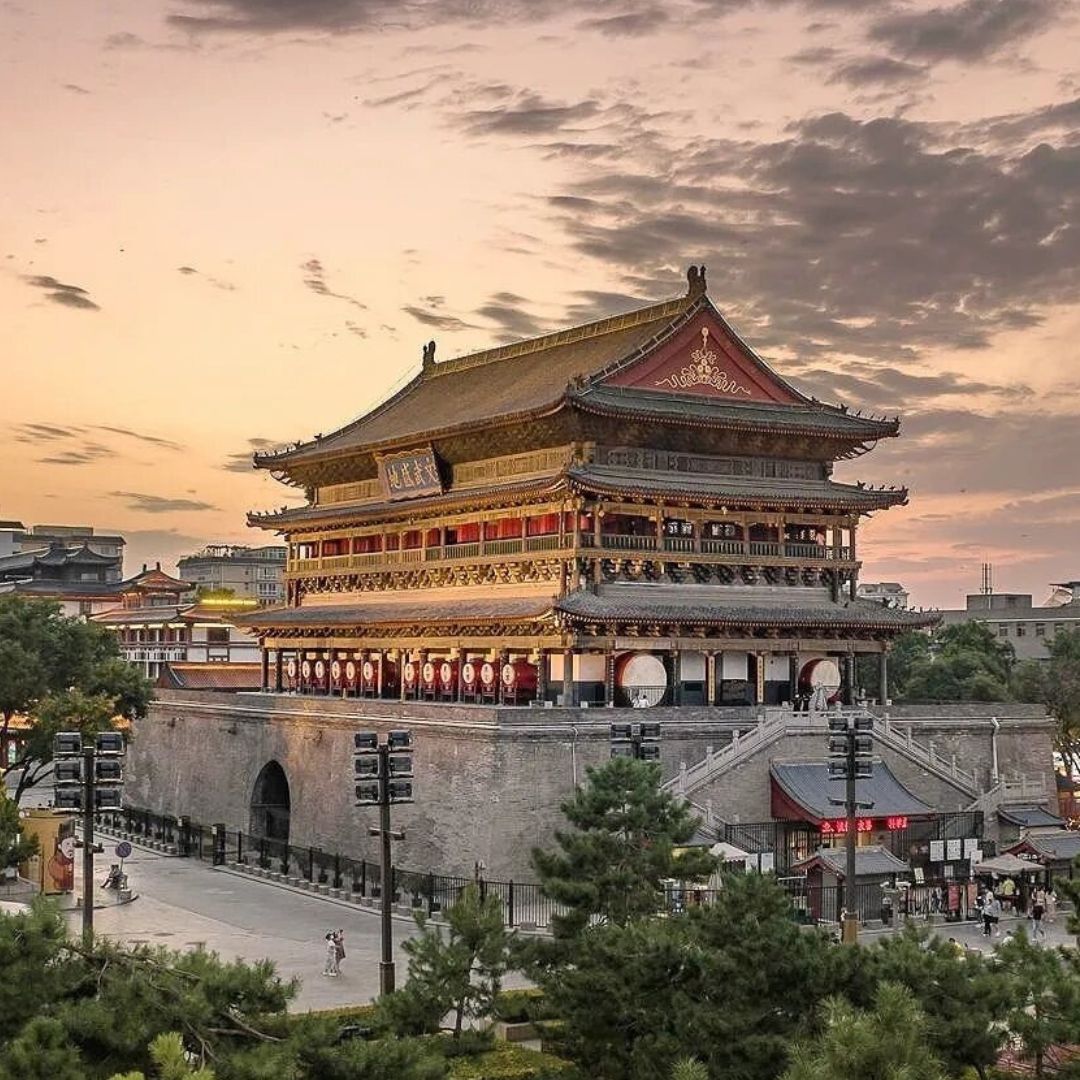The Xi’an City Wall is more than just bricks and mortar—it’s a living testament to ancient Chinese engineering, culture, and foresight. As one of the most well-preserved ancient city walls in the world, it offers not only a deep historical journey but also modern-day lessons in urban planning, technology, and tourism.

1. The Ancient Wall That Defies Time
Built during the Ming Dynasty in 1368, the Xi’an City Wall still stands tall today, despite the many worldwide walls that have vanished. Measuring 14 kilometers in length and up to 46 feet wide at its top, this wall is an enduring example of strategic military architecture.
- Walkway width: 39–46 ft
- Total length: 14 km
- Time to walk: Approx. 3–4 hours
2. A Gateway to the Past: Entering the East Gate
Visitors typically enter through the east side, greeted by arched, tunnel-like gateways designed for security. These had gates on both ends, leading into a large courtyard capable of holding up to 1,000 people. Above the courtyard stood five-story buildings where archers once defended the city.
3. Strategic Defense System
Every 500 meters, you’ll find military watch posts equipped with ramps, used historically for horses and catapults. Each post was in visual contact with the next, enabling seamless communication across the city wall. This intelligent design made Xi’an virtually impenetrable.
- Watch posts every 0.5 km
- Ramps for horses and weaponry
- Elevated view for surveillance
4. Panoramic Views and Vibrant City Life
From atop the wall, the contrast between ancient design and modern urban life becomes clear. Beneath the wall, hotels and restaurants thrive, offering views directly onto the ramparts. This seamless blend of past and present is part of what makes Xi’an so unique.
5. The Clean, Refreshing Air of Xi’an
Unlike other Chinese cities that sometimes suffer from pollution and congestion, Xi’an feels open and breathable. The city’s cleanliness, orderly traffic, and disciplined environment contribute significantly to its charm for both locals and tourists.
6. Halal Food and Cultural Diversity
Muslim travelers will appreciate the availability of Halal food in Xi’an. Halal signs are written in green Chinese characters, and restaurant staff are often respectful and accommodating. Many confirm their offerings by reciting Surah Al-Fatiha in response to visiting Muslims.
- 12-dish Halal Chinese course
- Green signs for Halal verification
- Cultural hospitality from locals
Xi’an City Wall: A Journey Through Time and Innovation
7. Surveillance, Safety, and Smart Systems
Security in Xi’an is handled through an advanced network of smart cameras and facial recognition technology. While police presence is minimal, real-time monitoring ensures safety. Every citizen’s data is linked to the system, making crime virtually impossible to hide.
- Smart surveillance nationwide
- Minimal visible policing
- Passport scans for tourists
External Source: China’s Smart Surveillance
8. Seamless Tourist Experience
Your passport acts as your ticket to most tourist attractions in Xi’an. From airports to historical sites, facial recognition and scan systems guide you effortlessly. At the airport, screens show your next flight and terminal information based on a quick scan.
9. Xi’an: A Global Education Hub
Xi’an hosts 75 universities, including Jiao Tong University, established in 1896. It’s part of China’s effort to enhance global education partnerships. Pakistani students studying agriculture and livestock under Chinese scholarships are living proof of this initiative.
- 75 universities
- Jiao Tong University (since 1896)
- Cross-border educational cooperation
10. Cultural Reflections: A Comparison of Human Traits
The author reflects on how different human races possess different innate strengths—from the hardworking yellow-skinned Chinese to the inventive whites and the spiritually inclined browns. These observations add philosophical depth to the travel narrative.
Internal Link: Explore More on Ancient Chinese Civilization
FAQs
Q1: Why is Xi’an City Wall historically significant?
A1: It’s one of the oldest and most complete ancient city walls in China, showcasing brilliant military architecture and urban planning.
Q2: How long does it take to walk the entire Xi’an City Wall?
A2: Walking the 14-kilometer wall typically takes between 3 to 4 hours.
Q3: Is Halal food available in Xi’an?
A3: Yes, numerous Halal restaurants are available. Look for green Chinese characters and confirm by reciting Surah Al-Fatiha.
Q4: How secure is Xi’an for tourists?
A4: Extremely secure due to an advanced nationwide surveillance system. Visible policing is minimal, but monitoring is continuous.
Q5: Are there English-speaking guides or translations available?
A5: Yes, most tourist hubs provide multilingual services, and technology aids like mobile apps can translate signs and menus.
Q6: What is the best season to visit Xi’an?
A6: Spring (March–May) and Autumn (September–November) offer the best weather and clear skies.
Conclusion: Xi’an—A City That Bridges Centuries
Xi’an is not just a relic of China’s imperial past; it’s a blueprint for future cities that wish to blend heritage with technology. From historical marvels like the City Wall to cutting-edge surveillance and efficient tourism systems, Xi’an sets an example in many domains.
Call to Action: Planning a trip to China? Don’t skip Xi’an. Walk the wall, feel the history, and experience the future—all in one city.

